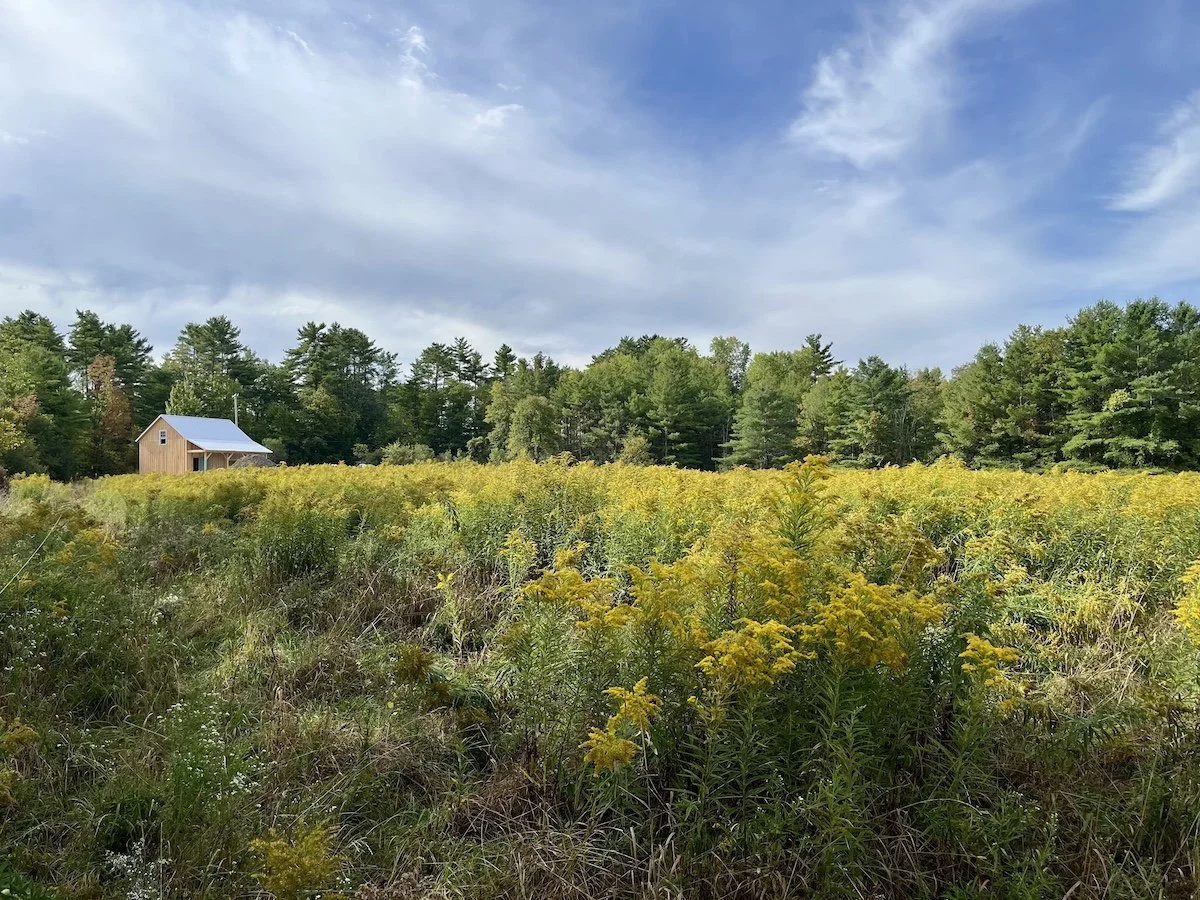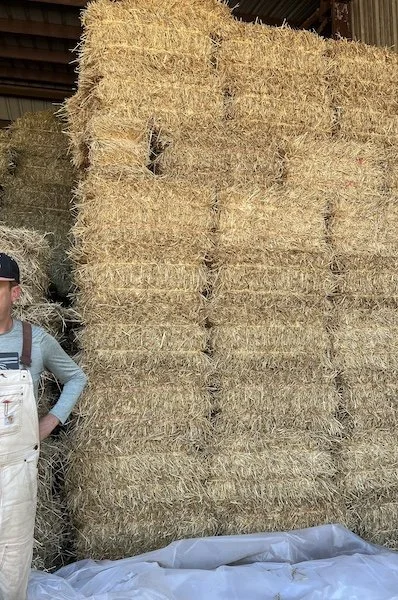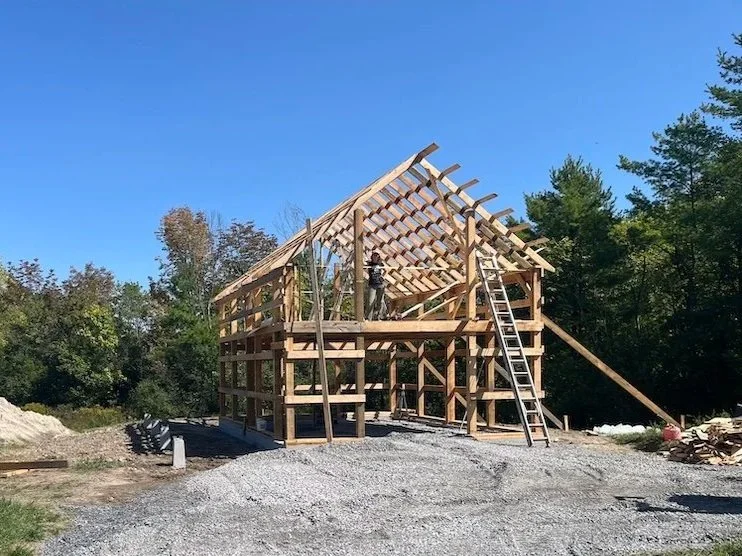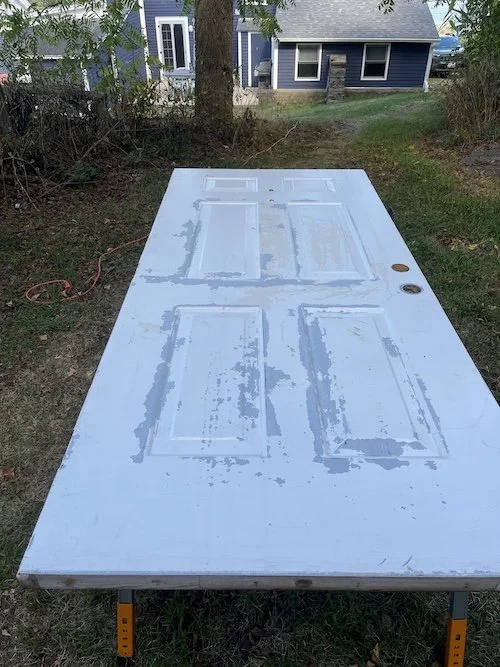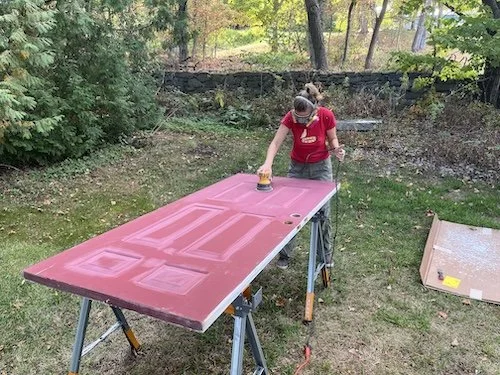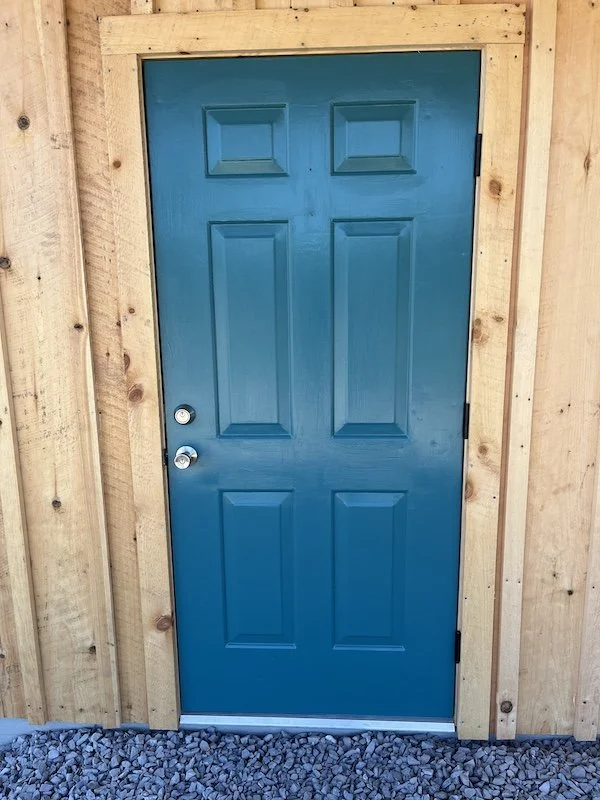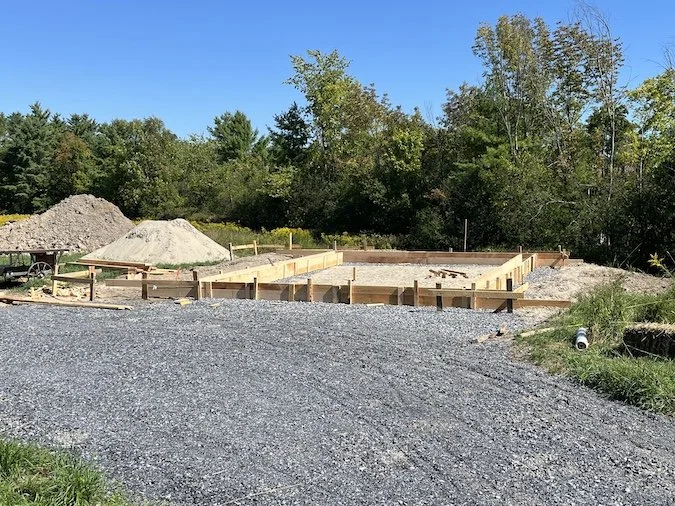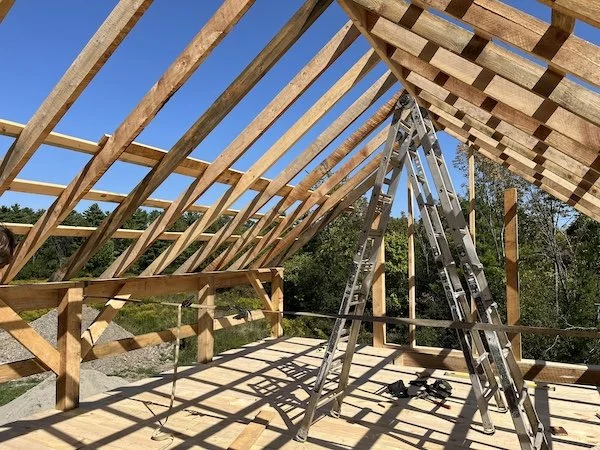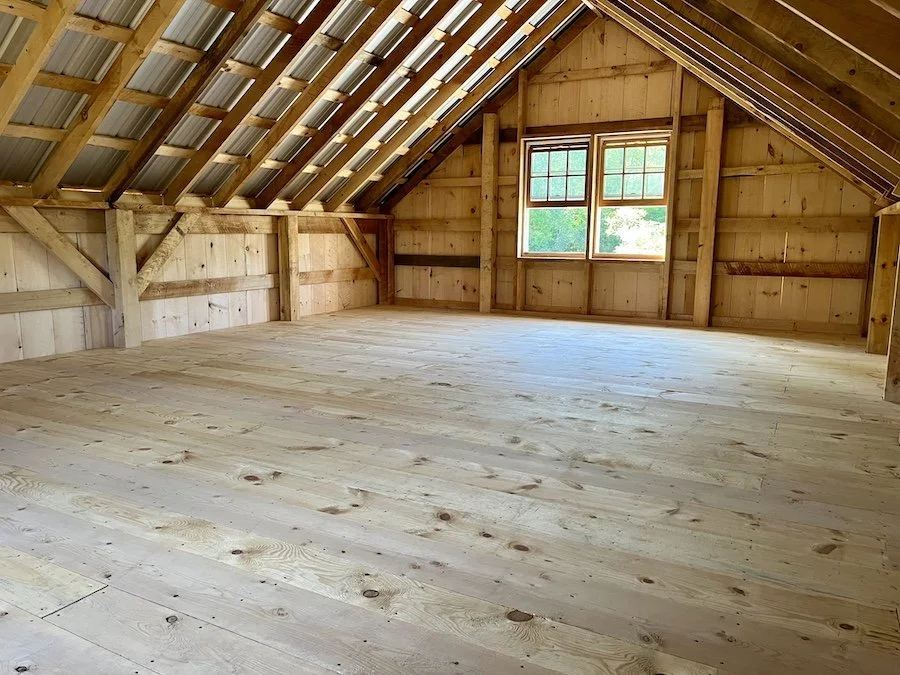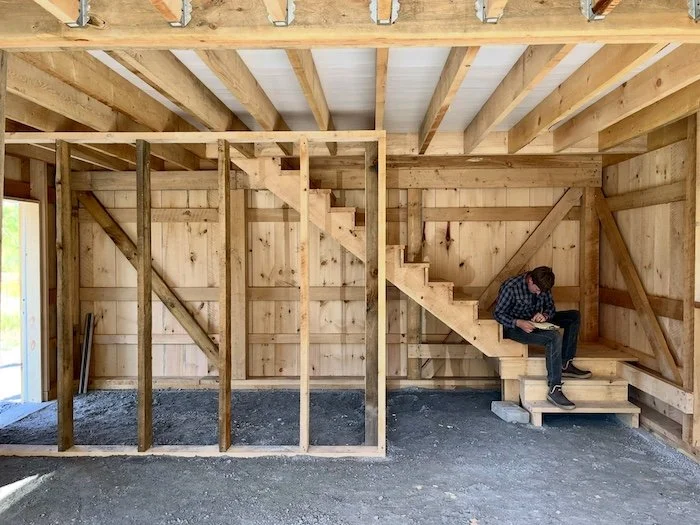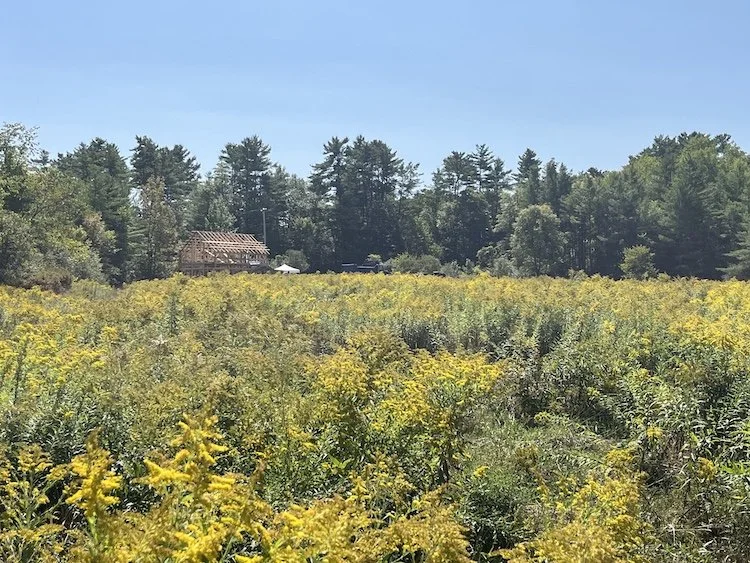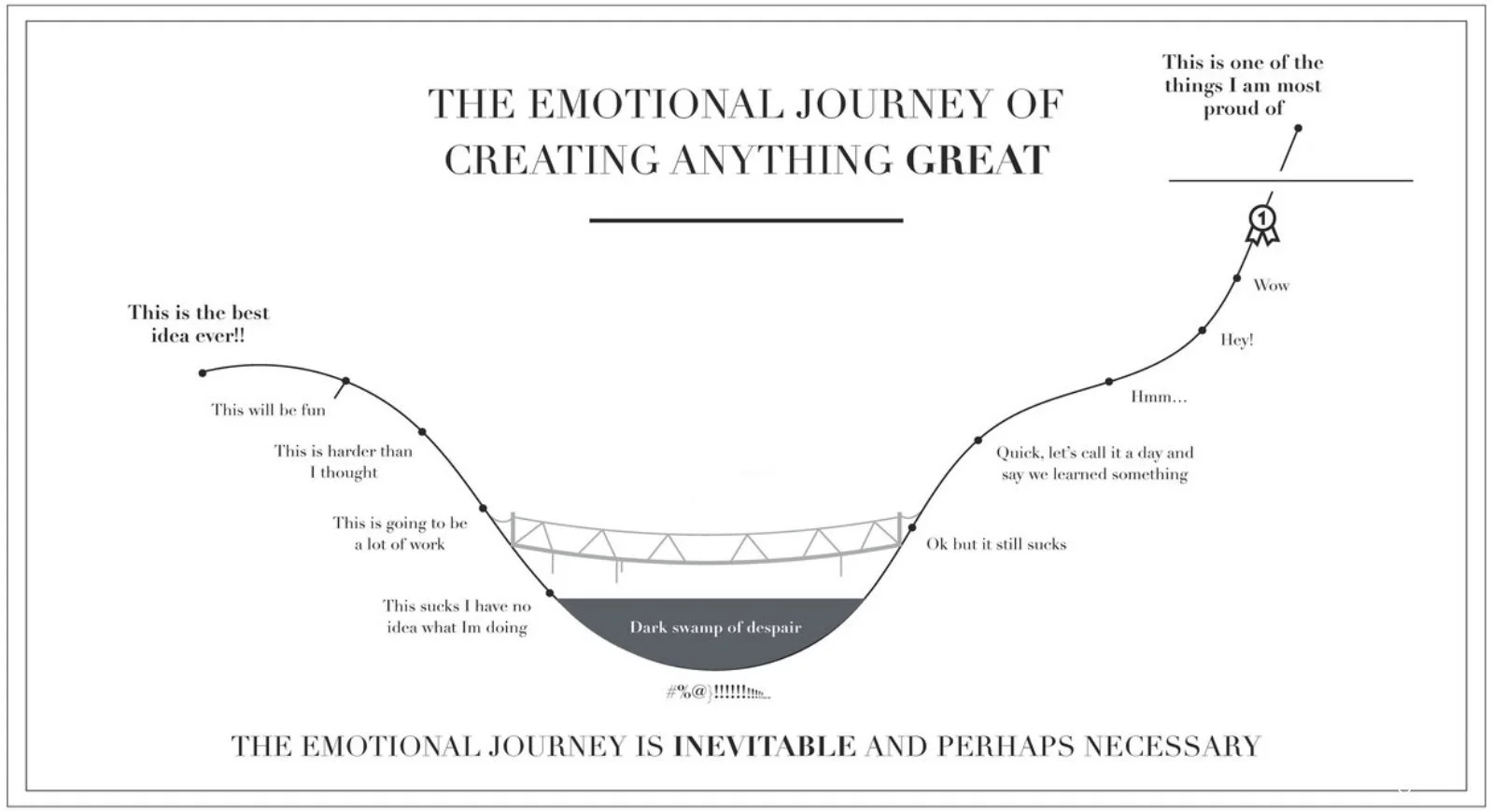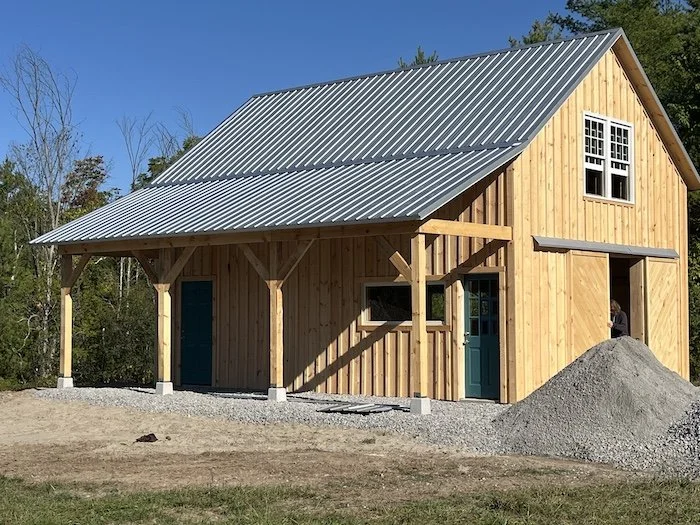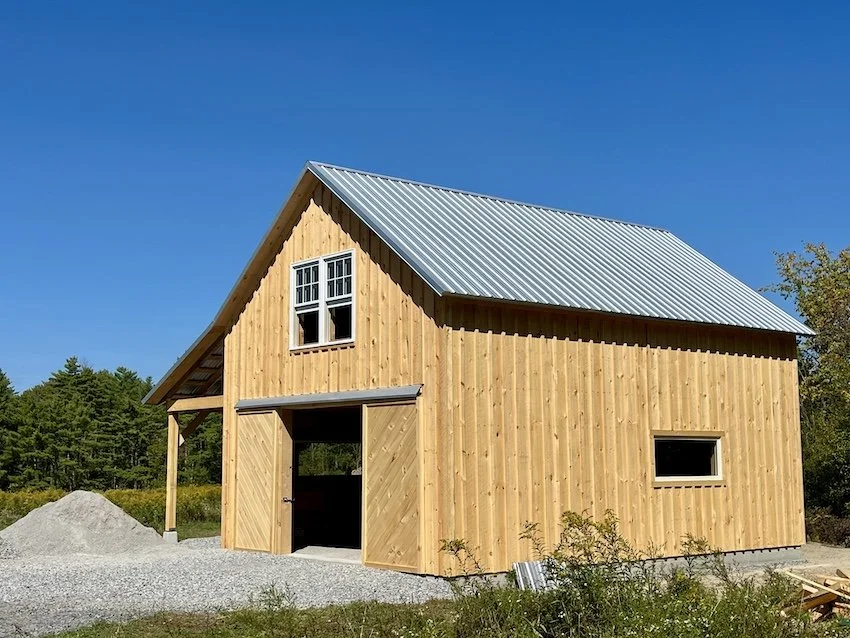
Turning Problems into Solutions
October 6th, 2025 - The Gerhardt’s
We’ve been spending a lot more time on the farm together and it’s feeling like home, like this land was waiting for us, and holding potential for growth in more ways than just farming.
Early last month we made our first plaster samples from soil on our farm. A big part of our house build will be using soil from the land to make adobe floors, a cob wall and bench, cob finish for our masonry heater, and the most labor intensive of them all, plaster for our interior walls. We need to figure out if our farm's soil will have the right properties. We learned a lot during our first round of samples and have now done a second round with sharper sand. We have a few more rounds to go before we figure out the right mixture of soil, sand, and straw.
Jason making our first plaster samples and our first plaster sample board
Speaking of straw, we were able to secure the straw bales that we’ll use to build our house—all 700 of them! We stopped in at a farm that grows rye for whiskey just a few miles from our farm, instantly making a connection talking about farming in the drought we’ve been in. The farm is certified organic, so they don’t use herbicide for weed control, and they had excellent straw this year since the weed pressure was so low due to receiving little rain. Normally they don’t even harvest the weed-choked straw, which would have had us looking in another county entirely to find what we need.
We bought two bales to inspect on our own, liking what we found, and went back the next day to look at the rest and agree on a price. Sourcing our straw was a huge box to check. We loved that this farm family was so friendly, grew organically, that the straw was extra dry, and that this part of our house will be sourced from within our community economy. What’s more, they’re storing the bales under cover until we need them so we don’t have to try and fit them into our barn.
Our straw bales in storage at the local farm
The biggest news from this past month is that we raised a barn! Most immediately we needed a place to get out of the elements and keep things on the farm. Longer term we need a place to wash produce, keep produce in cold storage, protect a small tractor, and have a place for a farm office and classroom.
We worked with the Amish for this barn by building a relationship with a family who lives on our road. We’ve been struck by their kindness, calmness, and skillfulness. It’s kind of cliche that the Amish are barn experts, but it’s been a blessing to have access to them as people in addition to their skill. We consulted with them as we designed the building over the summer months, successfully permitting the structure, and started preparing the materials.
Sarah on the second floor during the build, taking it all in
This Amish family has a sawmill on their farm where they processed raw logs into rough sawn lumber, set key pieces out to dry for a couple months, and the week of construction brought all the lumber to our farm by horse drawn wagon in several loads.
We also salvaged the windows and doors for the barn. Sarah cleaned, sanded, and repainted them, turning items that could have been trashed into key components of the barn.
From left to right: side one of door before, side two of door being sanded by Sarah, door painted and installed
On the first day of construction it took two guys to build the wooden forms to hold the concrete grade beam that rests on the rubble trench footer we had installed earlier in the summer. Day two, Jason worked with the same two guys to pour the grade beam that supports the structure.
We ordered a concrete truck for this and learned that at the end of pouring, whatever excess concrete is in the truck has to get dumped on-site. Did you know that happens on almost every construction site? We did not and were totally unprepared. Fortunately, Jason calculated a precise amount of concrete and there was very little left over, but it was still an uncomfortable moment watching it slide down the chute onto the ground. Random piles of concrete are definitely not part of our vision.
Form work for the grade beam foundation
We had another significant uncomfortable moment too. We realized we would have a little less floor space than we expected because of our ignorance about building from scratch. We now intimately understand the first-time builders' admonition that goes “if you want to build a house, build a shed/barn/garage first.” The idea is that’s where you can more comfortably live with your mistakes. And you will make mistakes despite whether you think you’re an exception to the rule. With a whole house to go, we decided to build this barn first because we assumed we weren’t overly exceptional. Mistakes have been made, lessons learned, and we’ve already made peace with the new constraints. It’s actually not that big of a deal in the end, and it’s probably not the last mistake we’re going to make, so our expectations are now properly set.
The upstairs during construction, and finished
We even managed to turn the square footage loss into a gain before any walls were framed and raised. Fortunately we had some days in between pouring the concrete and it curing to process and think through our mistake. We decided since we were losing square footage we should check to see if we could gain additional overhead space upstairs, rendering the floor even more usable than if we had the original square footage we planned. We measured all the posts that were cut and found just the right amount in the stack with extra length so we could raise the roof a foot higher, which meant we could use the entire floor space without hitting our heads on the roof rafters. Problem successfully turned into solution.
All told it took the Amish six days of building and two days of prep. We spent an additional day cleaning up after they left. We also have some days ahead of insulating the walk-in cooler and building shelves and a work bench from left over scrap wood.
A main takeaway for us from working with the Amish is that many times in the building process we felt sadness that we didn’t grow up getting deeply skilled in doing things for ourselves. Seeing how precisely our neighbors led teams of horses, sawed logs, and steadily built a barn with hand tools was incredibly impressive. They all knew what to do, elegantly moving from task to task.
Jason in the barn after completion, with future walk-in cooler on the left
For us, growing up almost strictly in a money economy, we weren’t encouraged to develop the skills of meeting our basic needs. Instead we were encouraged to get jobs and later develop careers in a single skill to exchange for money. As our barn went up we felt the disempowerment of not being able to help in the build as much as we would have liked simply because we would have been in the way and slowed things down from lack of skill, which would have cost us more money—what felt like an entrapping paradox.
There’s no escaping exchanging currency for skill in our world, despite the efforts of a few trying to get away from it through some kind of imperfect philosophical subsistence. To be clear, our Amish neighbors built for us for the money more than neighborliness. Even those who can meet 95% of their needs still require currency. Somewhere along the line you’ll run into a dead end without it. And to be further clear, we don’t think money economies are an inherently bad thing. They do have their limitations however. We’re seeing that at scale in our society with rapidly rising costs of living due in part to the hyper commodification of everything and our lack of ability to do for self.
Part of why we’re building our own house is to reclaim the skills of architecture and construction specifically. We’ve both already spent over thirty combined years learning how to farm and restore land, so we know how to produce food and tend landscapes very well. But when it comes to building, we never prioritized it. It just wasn’t in the career path.
View of barn during construction from our field full of goldenrod
What’s more, both of us have ancestors that built their own houses in New York. For Sarah it was her grandfather and father here in the Adirondacks, and for Jason it was his great grandfather in the Catskills. So building is in us, despite the fact that we never received transmission of these skills. Even though Sarah had access to learning carpentry since she was little, she never found the right opportunity, being told by the men in her family that it was not for girls.
The only way to reclaim these skills is to start. So we’re doing our best to find ways to accomplish that. And we’re grateful for our Amish neighbors for being a good example of a culture that passes these skills from one generation to the next.
Through the process of the build we learned other important lessons about ourselves too. Our next door neighbor who’s a therapist, shared that most of her client couples come in during a house renovation or build, and we can totally see why!
Working with your significant other is hard, no matter how well you think you work together. You love each other, but your minds and the way you process things are usually different.
During our barn build we had a moment of not hearing each other and getting frustrated, with Jason walking in fuming circles and Sarah walking away, but we quickly came together and learned what we both needed.
This is what the week of building the barn felt like
The key is to not get caught up in attachment to your own way and thinking you’re right. It’s a willingness to let go, listen to what your partner needs, and reconcile your differences into developing a conscious way forward that respects both of your needs. There’s so much growth potential when you’re willing to go there.
One of Sarah’s favorite Zen quotes is, “The great way is not difficult for those who have no preferences.” Now try dropping all your preferences. Not easy. It’s a good practice in seeing a bigger picture however, and we’re both grateful that we spent decades learning how to work with ourselves and others effectively, thanks largely to our practice of Buddhism.
These internal and interpersonal skills are also sorely lacking in our society. More to reclaim. The barn build was a great practice for learning about how we can best work together. It brought to light the things we’re both really good at, and through good communication we’re creating the space for each of us to shine in those areas.
Sarah is a very detail oriented person who likes to ask a lot of questions and is really good at overseeing the work and making sure it’s done exactly right. Jason is gifted at holding the bigger vision of how everything works together, making sure we’re staying on track, and doing everything in the right order. We now understand each of our roles on this project better and can relinquish control over areas we’ve admitted aren’t our strongest suits. One more problem turned into a solution.
Our finished barn!
We’re taking what we learned from the barn build and applying it to our next steps. We still have to get our house foundation in and bring electricity into the farm before winter comes. Let’s see where else we can grow along the way.
Stay tuned,
Jason and Sarah
